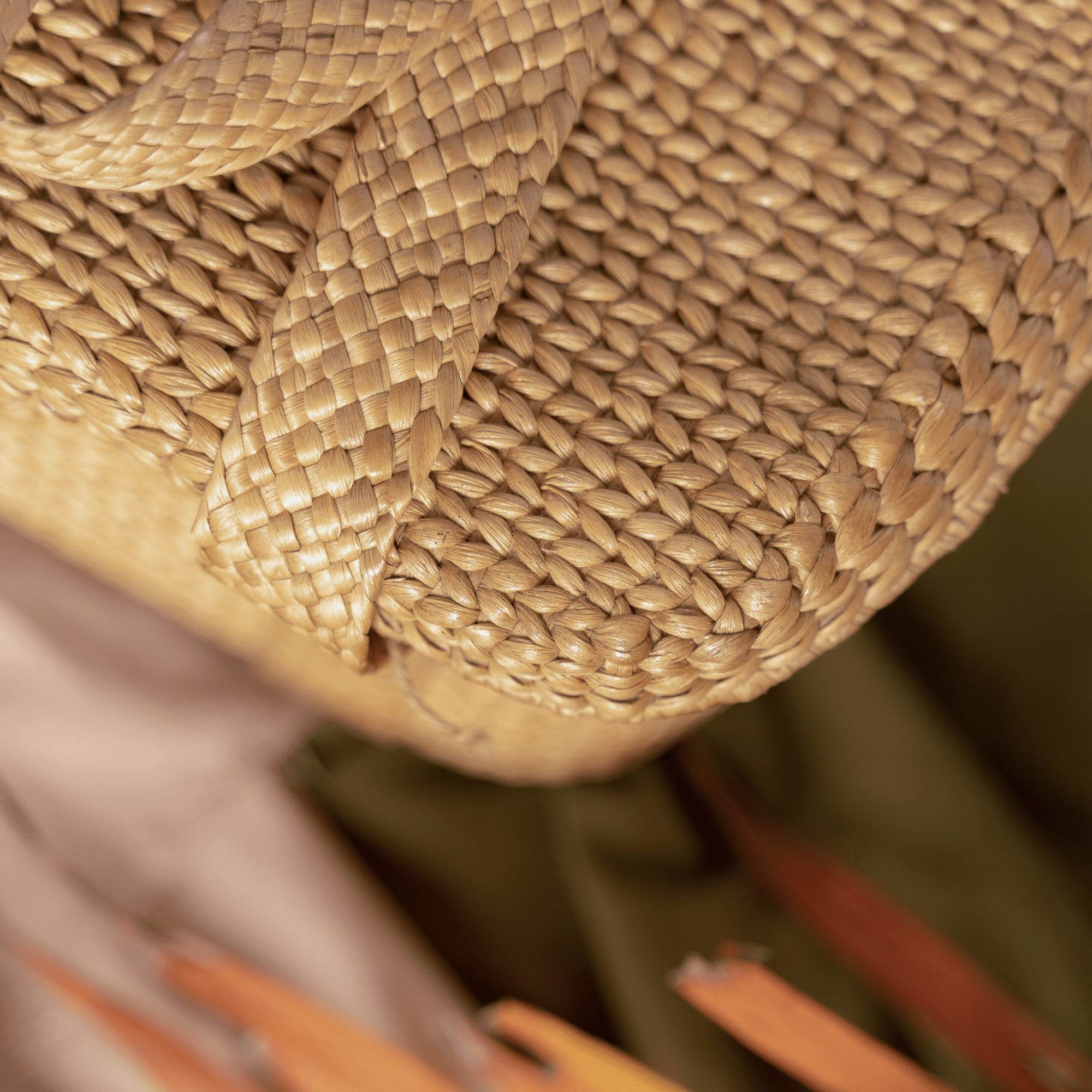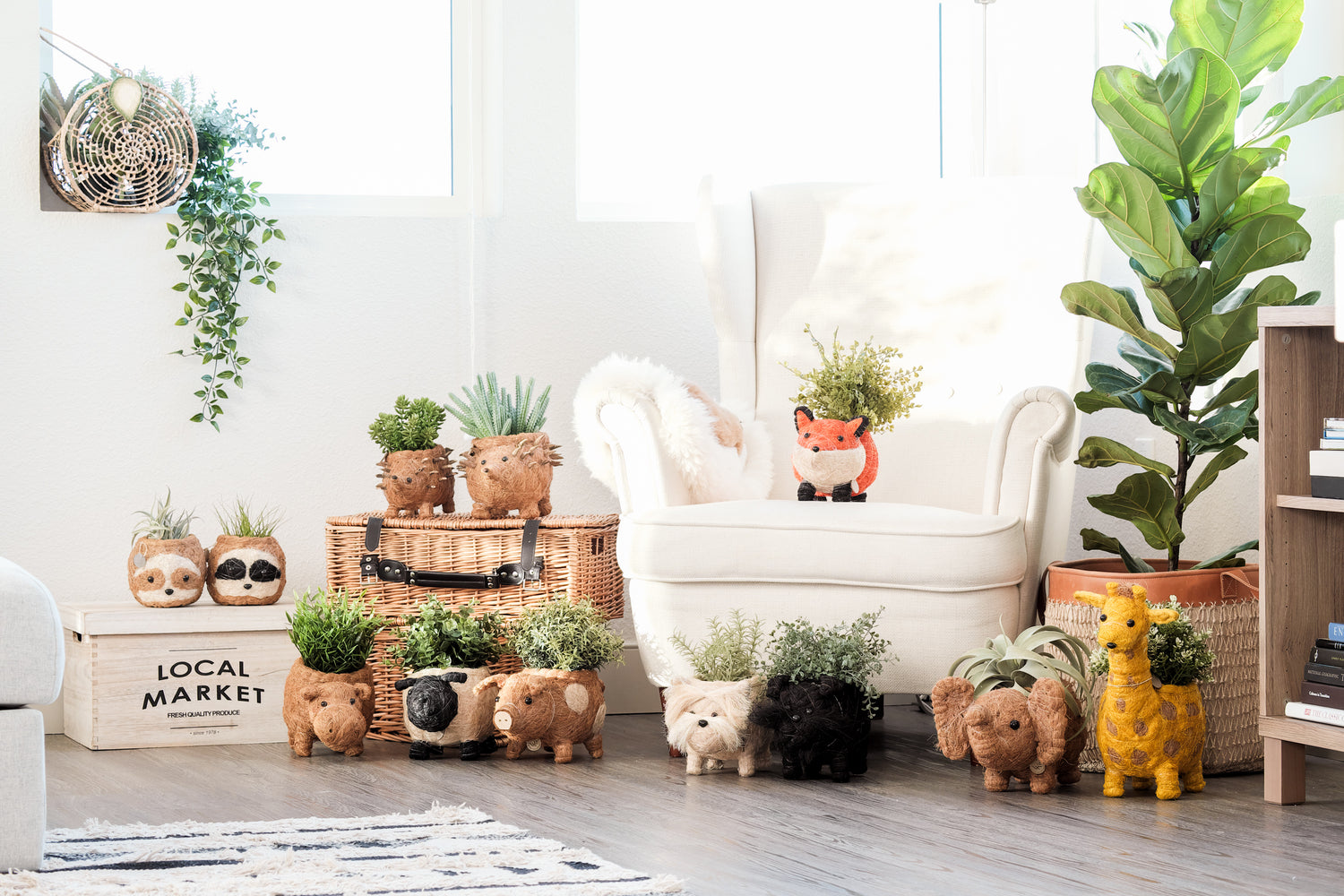Abaca fiber is undoubtedly one of the world’s most in-demand materials. This lustrous fiber finds its way to different industries globally. This month, we spotlight one of Likha’s most favored materials – the amazing Abaca.
Abaca Plant In Focus

Photo by Charles W. Miller
Abaca comes from a banana species, Musa textilis, that is endemic to the Philippines. While it is also called Manila hemp, it is not related to true hemp. The plant grows to about seven meters. Abaca, however, has a “false trunk” called a pseudostem. This stem grows to about 6 to 15 inches in diameter. Unlike other leaf fibers, abaca is extracted from plant leaf stalks or petioles. These petioles grow to about a foot in length. There are about 12 to 25 petioles that form sheaths around the base. Oblong-shaped, these leaves are usually pale green on the underside and dark green on the top.
Strand color ranges from white to red, purple, brown, and black. The colors depend on the variety, stalk position, size, and processing method. Outer petioles yield darker fibers while inner sheaths are lighter. Outer sheaths also produce the strongest fibers.
The abaca plant thrives in rich, loamy, and loose soil with good drainage. Volcano slopes are said to provide an ideal growing environment. The main propagation technique is by cutting and transplanting rhizomes. Propagation is usually done at the start of the rainy season. Within 18 to 24 months, an average of two to three plant stalks are ready for harvesting. Harvesting is done by cutting off the leaf stems close to the ground. Abaca plants are normally replaced every ten years.
In the Philippines, harvesting is done by tuxying. This method separates the primary and secondary sheaths. Then fibers are manually stripped using a stripping knife at the harvest site. Strands that are six to 12 feet long are separated by combing. Traditional air and sun-drying follow. The strands are bundled and brought to the farmers' cooperative trading warehouse. There, they sort the fibers by color grades. The lightest strands usually fetch a higher price due to their rarity.
Future Fiber

Photo by Philippine Fiber Industry Development Authority
Abaca has exemplary characteristics that make it a sought-after product. The Food and Agriculture Organization of the United States dubs it as one of the future fibers,
Abaca has high economic value because of its remarkable traits. For one, it has exceptional strength. It is a hard fiber with a texture like that of coir and sisal. Abaca also has great buoyancy, durability, flexibility, and resistance to saltwater. These are the main reasons why abaca is a preferred textile for rope and marine cordage. These are reasons why abaca is also used for cables, fishing nets, and lines. It is also made into hawsers, ship ropes, and well-drilling cables. Some hoisting and power-transmission ropes and twines also use abaca fiber.
Here are also other uses for abaca:
1. Automotive

Photo by Johannes Nollmeyer
"Soft” applications make use of Abaca in the automotive industry. Bolster and interior trim parts use it as fillers, for example.
Abaca's high tensile strength and length make it ideal for other industrial applications. Some examples would be in exterior semi-structure parts. Abaca also has a high potential to substitute glass fibers in automotive parts. Replacing glass fibers with natural fibers in automobile parts is a weight-reducing tactic. It also helps in recycling and more environment-friendly parts production.
2. Construction

Photo by Canva
Abaca is a promising solution for the construction industry’s evolving needs. This is because of its eco-friendly and versatile attributes.
Its phenomenal tensile strength and deterioration resistance make abaca a favorite. This is especially true when used as a reinforcing material in composite applications. Its biodegradable and renewable properties feed the demand for eco-friendly and lightweight materials. Abaca offers a compelling triad of advantages compared to traditional reinforcement materials. It is cost-effective, strong, and sustainable.
3. Handicrafts

In the Philippines, abaca handicraft-making is a cottage-based industry. It plays a significant role in urban communities. It is a major source of income especially for out-of-school youth and women.
At Likha, for example, we work with over 200 artisans across the country. Handicraft-making empowers them. It also provides them with a sustainable livelihood. Our mission is to provide them with dignified means to earn. Comfortable working conditions and fair wages are our priority.
Abaca is a favored material for handcrafted items such as abaca baskets, carpets, rugs, and décor.
4. Textile and Fashion

Photo by Saturdays NYC
Abaca is also in demand in the textile and fashion industries. Various textile applications benefit from its flexibility, luster, and smooth texture. Its durability, strength, and natural aesthetics make it popular among designers and manufacturers. Consumers and fashion brands lean towards more eco-friendly choices these days. As such, the demand for abaca in making fashionable items continues to rise. Accessories such as bags and sustainable jewelry use abaca. Clothing and home textiles like abaca placemats and table runners also use abaca.
5. Paper

Photo by Halinahin
The largest end-use industry for abaca is the paper and pulp sector. The increased application scope drives demand for abaca fiber in this industry.
Abaca is also used in other paper products. It is pulped and processed into cigarette filter papers, coffee and tea bags, and sausage casings. Abaca is also in disposable, food, and medical papers. High-quality writing paper, vacuum bags, and other paper products also use abaca. It is also used in currency notes, with Japan’s yen banknotes made of up to 30% of abaca.
Sustainability Solution

Photo from Canva
The use of abaca can significantly contribute to a “green” economy. Various environmental benefits come with the use of abaca such as:
- Biodiversity rehabilitation in rainforest areas and former monoculture plantations.
- Erosion and sedimentation control. It may also help prevent floods and landslides.
- Soil fertilization with abaca waste materials as organic fertilizer.
Abaca's biodegradable, renewable, and eco-friendly qualities make it a winner. With its exceptional strength, durability, and versatility, it is no wonder that it is one of the most sought-after fibers in the world. The abaca industry is valued at USD515.2 million in 2022. It is projected to rise in value by up to USD 1,362.1 million by 2030. Demand for eco-friendly alternatives is favored over synthetic materials. This makes the future look bright for the abaca industry.
As a consumer, wouldn’t you also choose abaca products? Wouldn't you want to contribute to a greener, more sustainable world?



